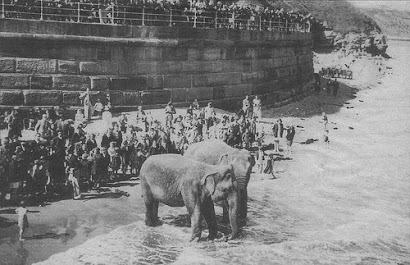'In the matter of the Christmas feasting there is nothing so distinctive of it as in the making of the frumety. He is no Yorkshireman who does not know what furmety or frumety is. It is one of our institutions. As regularly as Christmas comes round preparations are made for the manufacture of this Yorkshire dish.'
Rev. M.C.F. Morris from Yorkshire Folk Talk 1892

Rev. M.C.F. Morris from Yorkshire Folk Talk 1892
A 17th century recipe for frumety
...
The traditional method of making frumety (or frumenty, furmenty, formtiy, however you spell it, all versions are based on the Latin frumentum meaning grain) was a time consuming labour. If a household had no wheat of their own, the tradition was to beg some from neighbouring farms on St Thomas' Day (December 21st).
The wheat should be soaked in water for a day then put in a bag and beaten to get the hullins, the outer coats of the wheat grains, to seperate. Often this was done by thrashing the bag with a flail. Then the whole lot was put into water. The hullins would float to the surface and the pure wheat could be extracted.
The wheat should be soaked in water for a day then put in a bag and beaten to get the hullins, the outer coats of the wheat grains, to seperate. Often this was done by thrashing the bag with a flail. Then the whole lot was put into water. The hullins would float to the surface and the pure wheat could be extracted.
After being put in an oven to cree for two or three hours, milk was added and the pan was put over the fire to boil. Sugar was added together with nutmeg and any other spices and flavourings according to people's tastes and fancies.
The dish was originally eaten on Christmas Eve together with cheese, gingerbread and yule cakes. These were cakes of currants, citron and other tasty ingredients. Each person had one to eat with the frumety.
Easier recipes for frumety can be found without too much trouble on the web that generally don't involve setting about a sack of wheat on the kitchen floor with a flail.
Recipe 1
Recipe 2
Recipe 3
The dish was originally eaten on Christmas Eve together with cheese, gingerbread and yule cakes. These were cakes of currants, citron and other tasty ingredients. Each person had one to eat with the frumety.
Easier recipes for frumety can be found without too much trouble on the web that generally don't involve setting about a sack of wheat on the kitchen floor with a flail.
Recipe 1
Recipe 2
Recipe 3










_25497.jpg)




